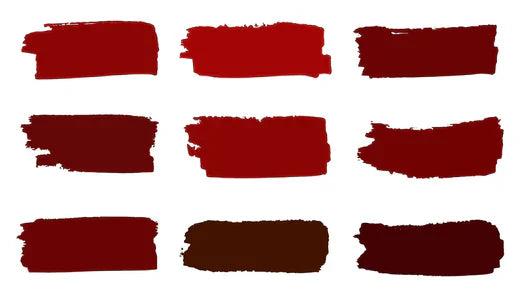Nipple discharge is not exclusive to the menopause. However, due to the changes that occur during this period, it can be a common symptom. Here we explain the main causes of this symptom and how to take care of your breasts.
To begin with, there is no reason to delay your medical examination for fear of the results. In most cases, this symptom is associated with benign causes and only a small percentage is a sign of cancer (1).
What is nipple discharge?
This is the name given to any fluid that leaks from one or both nipples. It may be spontaneous or in response to stimulation of the breast. It can also vary in colour, quantity and consistency (1).
Most common types
It should be noted that characteristics such as colour cannot conclusively indicate whether nipple discharge is normal or not. They can be indicative but are not determinative. For example (2):
- In infections we can find white, lumpy, yellow or pus-mixed secretions.
- In case of cysts, it can be green.
- Also, in breast ectasia (changes in the shape of the breast ducts), there will be a brown or cheese-like colour.
- For breast cancer and papilloma, it could be clear or bloody.
Common accompanying symptoms are (2,3):
- Discharge from one or both nipples.
- Nipple soreness or tenderness.
- Breast lump or swelling.
- Changes in the shape of the nipple (such as inverted nipple).
- Dimpling of the skin or orange peel skin.
- Hyperpigmentation of the breast skin.
- Itching or scaling, rashes or red lesions.
- Changes in breast size.
- Other symptoms such as fever, nausea, vomiting or fatigue.
Many of these symptoms are caused by benign breast disease. However, if your doctor suspects cancer, they will complement their diagnosis with other tests, such as breast biopsy (4).
Causes of nipple discharge

The sources are multiple, so examination and testing are necessary to arrive at a diagnosis. However, the most common causes are (5,6):
- Breastfeeding or pregnancy.
- Blockage of the milk ducts or if one of the milk ducts has increased in size.
- Breast lumps.
- Infection in the breast, known as mastitis.
- Side effects of medicines, such as the contraceptive pill.
- Change in hormone levels and breast ectasia as a result of menopause.
- Papilloma infection of the breast.
- Different types of breast cancer.
As you can see, although the cause is rarely related to cancer, it is advisable to see your doctor for any changes in your breasts. Most are benign in origin and can be solved with medication and a few simple measures (1).
Menopause and nipple discharge
As perimenopause begins and the changes associated with age (over 35 years) occur, changes in the structure of the breast ducts may occur. The ducts become shorter and wider, known as duct ectasia. In addition, hormonal changes may cause such secretions (7).
Recommendations for breast care
There are a few things that can help you reduce the risk of nipple discharge. These are (3):
- Exercise frequently.
- Eating a balanced diet.
- Maintaining a healthy weight.
- Taking medication to reduce your risk of developing breast cancer, if your doctor thinks it is appropriate.
- Ask your doctor when you should be screened for breast cancer, such as mammography and breast ultrasound.
- Performing regular breast self-examinations.
- Practising good skin care routine for your breasts.
If you want to know more about measures to reduce other symptoms of menopause such as tingling feet or excessive sweating, we invite you to join our community. Here you can learn about interesting topics such as recommended hair vitamins during this stage.
Remember that nipple discharge during menopause is not always a bad thing. Although it may be related to some medical conditions, it is usually temporary and harmless. The important thing is to be informed about the changes in your body and don't be afraid to ask your doctor if you have questions or concerns. Take care of your breasts at all stages of life and always be informed!
References
- The London Clinic. Nipple discharge
. 2023 . Available from: https://www.thelondonclinic.co.uk/services/conditions/nipple-discharge
- Watson S. What to Know about Nipple Discharge
. Healthline Media; 2023 . Available from: https://www.healthline.com/health/womens-health/nipple-discharge
- Parker H. Breast and Nipple Discharge: What It Could Mean
. WebMD; 2022 . Available from: https://www.webmd.com/women/breast-nipple-discharge
- American Cancer Society. Breast Cancer Signs and Symptoms
. 2022 . Available from: https://www.cancer.org/cancer/breast-cancer/screening-tests-and-early-detection/breast-cancer-signs-and-symptoms.html
- National Health Service - NHS. Nipple discharge
. 2023 . Available from: https://www.nhs.uk/conditions/nipple-discharge/
- Breast Cancer Now. Benign breast conditions
. 2020 . Available from: https://breastcancernow.org/information-support/have-i-got-breast-cancer/breast-lumps-benign-not-cancer-breast-conditions
- Breast Cancer Now. Benign breast conditions: duct ectasia
. 2019 . Available from: https://breastcancernow.org/information-support/have-i-got-breast-cancer/breast-lumps-other-benign-conditions/duct-ectasia
You May Also Like

JOIN US AND GET 10% OFF
Sign up to our newsletter to access free resources, advice and support.















